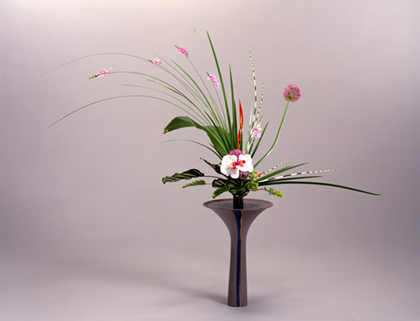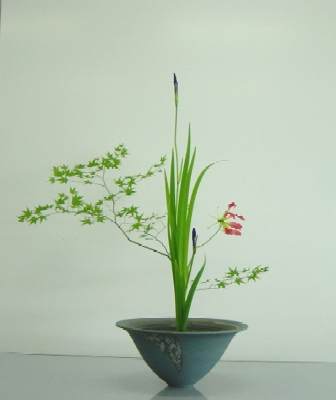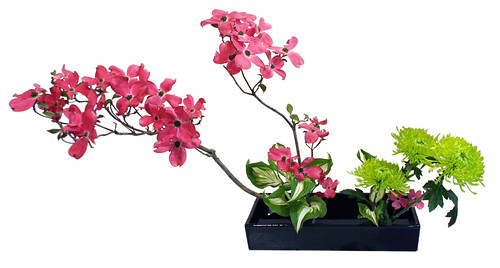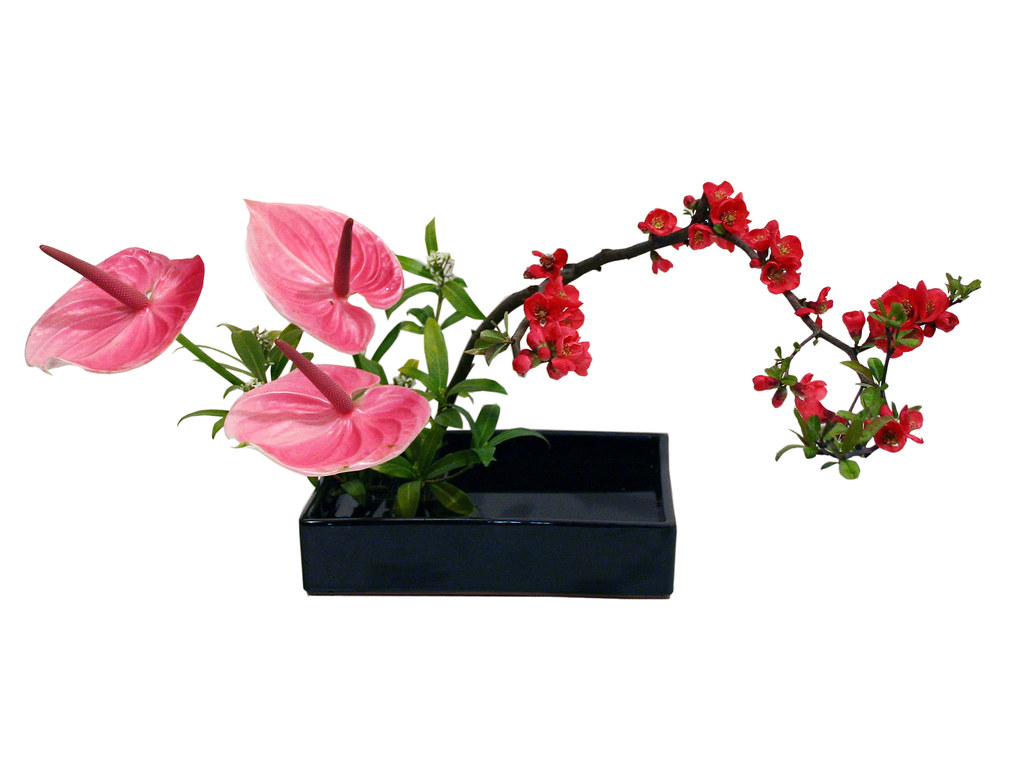Ikebana:
The arrangement of flowers.
Ikebana often emphasizes on areas of the plant other than its flower, for example, its stems and leaves. It also puts emphasis on shape, lines and form.
What distinguishes ikebana from other approaches such as “flower arrangement” is its asymmetrical form and the use of empty space as an essential feature of the composition. A sense of harmony among the materials, the container, and the setting is also crucial. These are characteristics of aesthetics that ikebana shares with traditional Japanese paintings, gardens, architecture, and design.

The above diagram summarizes the hierarchy of positioning different components in flower arrangements. I went to google some of the kanji to understand it. This diagram was helpful to me because it has the same format as school work. In a sense, the 2D diagrams are taken without perspective, just like the photos we are supposed to take as well. It talked about the ratio, which is crucial for Ikebana. Proportion comes into play as it brings out the essence of the composition.
Styles:
Rikka (立花 “standing flowers”)
Uses special techniques such as wiring.
Consists of 9 main stems/parts applying different character, length, angles and directions to create a harmonious landscape. They are known as yakueda.
Height, length, position of each yakueda responds to or supports one another. These are also the most important factors to consider.
Additional stems called Ashirai, which are not part of the 9 main stems are also required.


Chabana (茶花, literally “tea flowers”)
The method of arranging the flowers is according to the Nageire, or thrown in, style of flower arranging.
Each flower in a Chabana arrangement is styled outward—facing forward to welcome guests.
The focus is always on the visitor, so every colourful blossom should open up toward the centre of the room.
Minimal rules and creates a simple, natural look


Nageireban(投入 “thrown in”)
Cascading style arrangements have the main stem hanging lower than the rim of the vase. A flexible material will create beautiful lines balancing with flowers.
Utilizes fresh and spontaneous designs that adhere only loosely to the classical principles of triangular structure and colour harmony.
Slanted style presents a gentle touch and flexibility.


Seika/Shoka (せいか, しょうか)
Expresses the feeling of life, growing energy and the natural beauty of the materials.
Arranger is required to understand how the plants grow in its habitat.
The vase used in Shoka represents the source of life. The vase used will generally be symmetrical.
When viewed from the front the stem should appear as a single vertical line from the surface of the water for the first 6-8cm. This is called mizugiwa.


Moribana (盛花, “piled-up flowers”)
Different styles of moribana depending on the length and angle of the primary, secondary, and ornamental stems.
1) Upright style
The primary stem is placed vertically, secondary stem is tilted 45 degrees and scattered over a 30-degree area to the front and left.
The ornamental stem is tilted 60 degrees and placed across a 45-degree area to the front and right. Seen from above, the three stems form a right triangle.
Flowers are placed inside this triangle to fill out the shape.
The upright style is the most common; it exudes a feeling of stability and gravity. In this style, the primary stem is about as long as the diameter and depth of the container combined, with the secondary stem being around two-thirds and the ornamental stem about half the length of the primary branch
2) Slanted style
Reversed arranging style that can be used depending on the placement of the display or shapes of the branches


The slanted style plays with direction and the branches guide the viewer’s eye. There is a calmness to it yet there is also a touch of mystery.
3) Water reflecting style


The water reflective style is incredibly intriguing. I wish to make use of this in my final work. I think it would be very interestng. The water adds the idea of calmness and serenity to the artwork. The idea of reflective surface can be linked to mirrors which can be used to symbolize illumination, wisdom and consciousness. It also represents the idea of truth.
Jiyuka (“自由化,free style”)
Nearly everything is possible but the emphasis is on expression with regard to seasons, special occasions, creative ideas.
Artificial materials can be used to support expression but they remain secondary.


There is movement being captured with the use of circular composition. I think this is the most expressive style out of everything else.
I think this can be incorporated well into seasons where there are strong wind movements. Perhaps the howling wings in winter?

